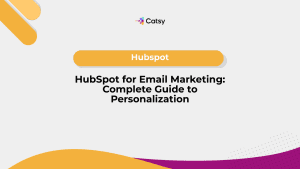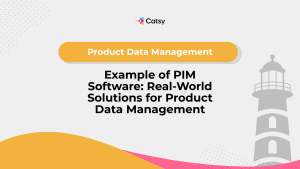Maximizing Sales with Effective Shopify Customization Strategies
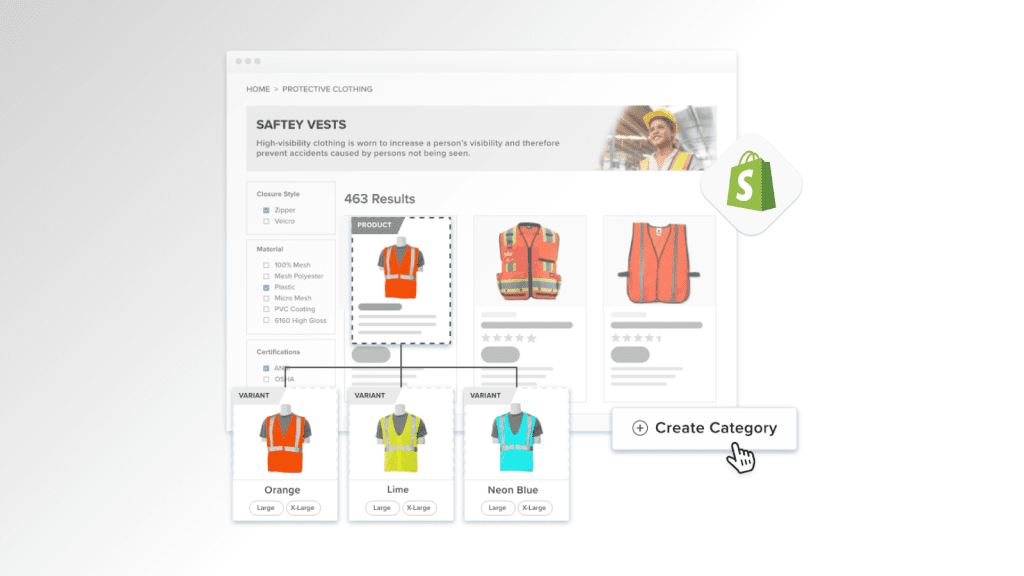
- Shopify customization allows you to tailor your store to fit your brand and maximize sales.
- Key strategies include theme, product, and checkout customization, enhancing store navigation and user experience.
- Harmonizing these strategies with tools like PIM and DAM is crucial for seamless, effective e-commerce operations.
In this Article
Most reports that explore popular e-commerce platforms often feature Shopify. For example, a recent Digital Commerce 360 survey included Shopify in a “big six” lineup as chosen by e-commerce companies. Many factors explain why Shopify often pops up in every popular platform list, and the biggest one is customizability.
Indeed, Shopify is a flexible and powerful e-commerce platform because of its customizability. The platform provides many templates that you can tweak to fit your taste. If that is not enough, you can get any application from the app store to extend Shopify’s functionality.
The customization allows merchants to stand out and offers a solid avenue to connect with their customers. For many businesses that exist outside of the digital realm, Shopify customization allows them to mold their online storefronts into a destination that reflects their brand’s unique identity.
In other words, Shopify customization is not merely another feature that distinguishes the platform from the competition. Instead, it is a strategy businesses can leverage to maximize sales and grow their bottom line. But here comes an important question: What is an effective Shopify customization strategy, and how can it help you maximize sales?
Read on to find out.
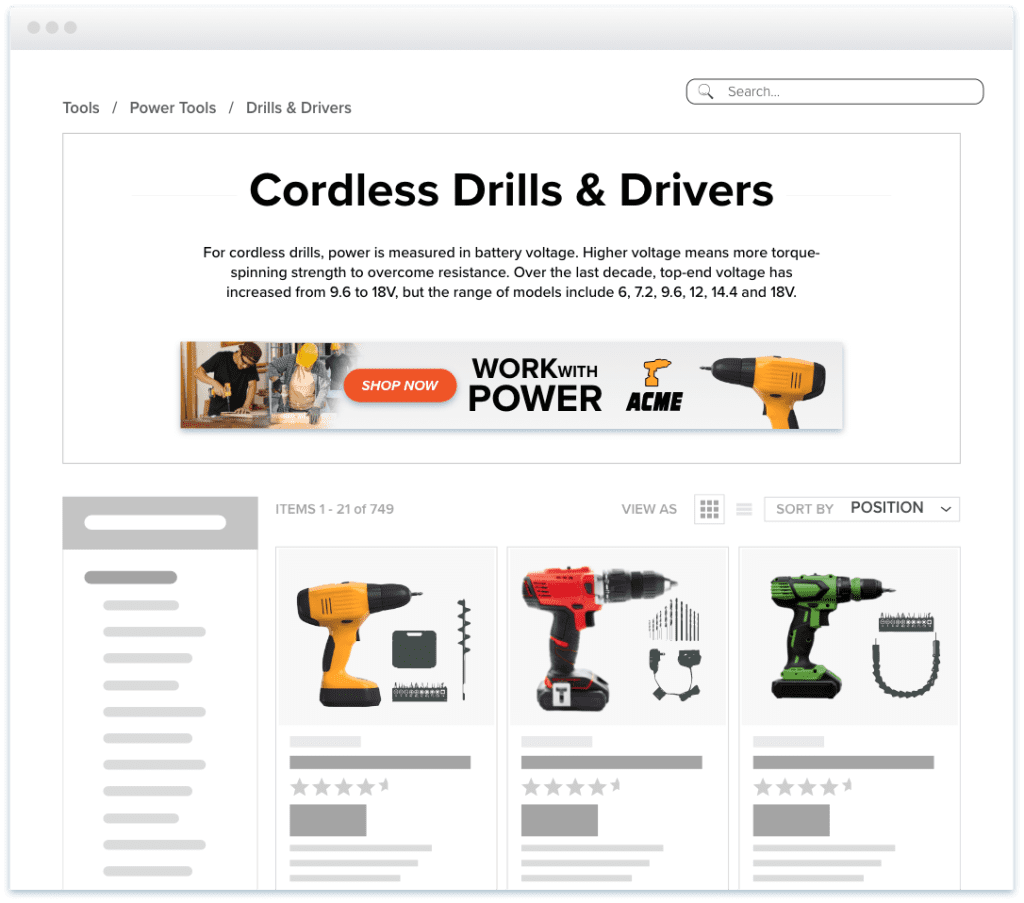
Understanding the Basics of Shopify Customization
What is Shopify customization?
Broadly speaking, customization is adapting a product, service, or experience to specific preferences. In the Shopify customization context, users modify elements of their online storefront to align with their brand’s identity, cater to the target audience, and enhance the overall shopping experience. So, when we talk about Shopify customization, we’re referring to how merchants can modify and personalize their Shopify storefronts.
This customization can take many forms. It might be as simple as changing color schemes and fonts to match your brand or as complex as overhauling the entire user interface and adding custom features. Shopify’s flexibility allows merchants to modify nearly every aspect of their digital storefront, from the visual design to the backend functionality.
However, Shopify customization isn’t just about aesthetics. It extends to how your store operates, how products are displayed, how customers interact with your site, and even how you manage your business behind the scenes. This could mean implementing a unique checkout process, creating custom product pages, or integrating specialized tools for inventory management.
Even better, Shopify allows you to customize your store regardless of your business size. Small business owners can make minor tweaks, while large enterprises can make extensive modifications to match the online presence with the physical brand. This adaptability informs Shopify’s popularity among businesses of all sizes in the e-commerce landscape.
Benefits of Shopify customization
It’s already apparent that the ability to craft a store to your liking is the most significant upside of Shopify customization. Other benefits include:
- Enhanced customer experience: A customized store can provide customers with a more personalized and engaging shopping experience, increasing their likelihood of purchasing.
- Improved brand recognition: Customization strengthens your brand identity and makes your store more memorable to customers.
- Increased sales: Creating a unique and appealing store can attract more customers and maximize sales.
- Better search engine optimization (SEO): A well-customized store can improve your rankings on search engine results pages (SERPs), making it easier for potential customers to find you.
- Competitive advantage: Differentiating your store from competitors can give you a competitive edge in the marketplace.
- Flexibility for growth: As your business evolves, Shopify’s customization options allow your store to grow and adapt alongside it. You can easily add new features or modify existing ones to meet changing market demands or business needs.
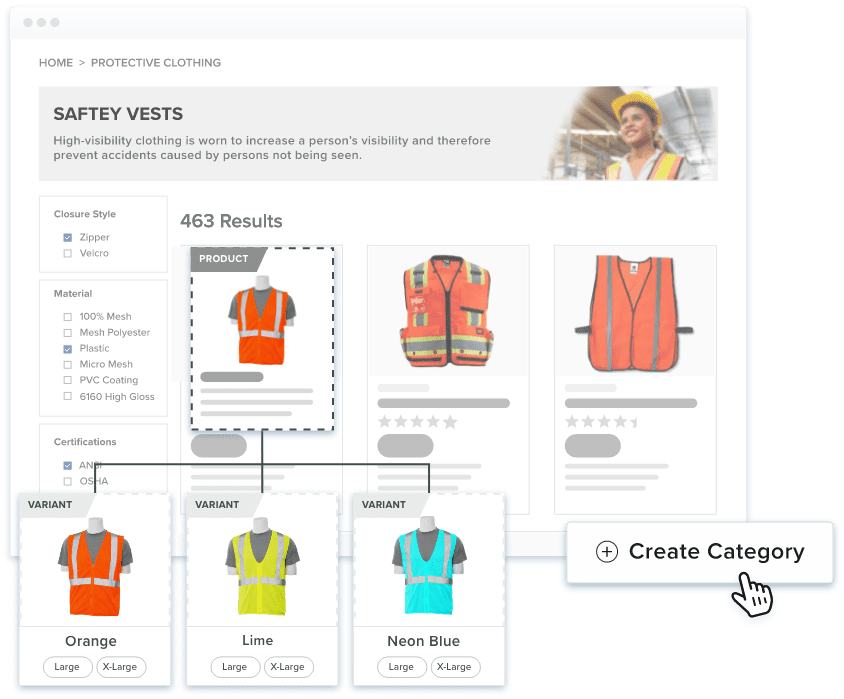
Shopify Customization Strategies
It should be emphasized that these strategies aren’t just about making your store look pretty. Instead, they’re about creating an environment that resonates with your customers, streamlines their shopping experience, and maximizes sales. Each strategy highlighted in the preceding paragraphs uniquely enhances your store’s performance and appeal.
Let’s start with one of the most fundamental aspects of customization: your store’s theme.
1. Theme customization
Shopify offers 11 free themes; if these are insufficient, you can choose from over 70 premium options in the theme store. The theme is the face of your store, and getting it right can make all the difference in how customers perceive and interact with your brand.
How do you approach theme customization effectively?
The first and most important decision is to pick the appropriate theme. Any theme in the option range must satisfy two conditions: first, it must align your brand identity, and second, it must cater to your target audience.
For instance, a robust, industrial-looking theme might be more appropriate if you sell power tools than a soft, pastel-colored one. A theme that might work well in this scenario might have strong and bold lines and a focus on product specifications. Deciding which theme to use should be guided by your products, your brand personality, and your customers’ preferences.
Settings
Once you’ve selected the theme, the second step is customizing the settings. This phase is critical because it allows you to align the theme with your preferences. Most Shopify themes allow you to modify the following:
- Colors: Adjust the color scheme to match your brand. For example, if your brand uses black and yellow (like many popular tool brands), you might use these colors prominently in the theme.
- Fonts: Choose typography that reflects your brand’s personality. For a power tool store, you might opt for a strong, sans-serif font that conveys durability and reliability.
- Layouts: Experiment with different layouts for your homepage, product pages, and collections. You might find that a grid layout with large, clear images works better for showcasing your products than a list view.
Don’t be afraid to explore and test different combinations. What looks good in theory might not always translate well in practice, so use Shopify’s preview function to see changes in real time.
Liquid
However, the basic modifications may not meet your needs, which calls for more advanced tweaks. In this case, you might want to familiarize yourself with Liquid, Shopify’s templating language. This approach offers powerful customization capabilities, such as:
- Create custom product filters based on specific tags or metafields.
- Develop a personalized recommendation system that suggests complementary products or accessories based on a customer’s browsing history.
- Design unique collection pages that group products by application. So, if you sell power tools, examples of application categories might include woodworking, metalworking, and construction.
2. Product customization
Theme customization focuses on the technical aspects of the store, but that is only a fraction of the picture. You also need to create an environment that encourages customers to purchase not just once but repeatedly. Product customization can make this possible.
Product customization revolves around the details and media that describe an item to the buyer. For instance, a title announces the product, and photos provide a visual appearance. As such, product customization can be described as the process of optimizing the product detail pages (PDPs).
How can you approach product customization?
Several approaches can enhance your customers’ shopping experience. First, you can create product variants with different attributes. This works seamlessly with Shopify’s Variants feature.
For example, suppose you sell power tools, and each item has several configurations. Say you have a cordless drill available in different voltages, with or without batteries, or in various kit combinations. In that case, Shopify allows you to create product variants to showcase these options clearly. For example:
- Voltage options: 18V, 20V, 24V
- Kit options: Tool only, Tool + 1 battery, Tool + 2 batteries + charger
- Color options: Yellow, Black, Red
Setting up these variants allows customers to easily select the exact configuration they need, reducing confusion and potentially increasing conversions.
Persuasive descriptions
Second, you can create persuasive product descriptions and use high-quality images. This approach benefits companies operating in the current business-to-business (B2B) environment. Why is that? According to a recent study, most B2B buyers (55%) rely more on content to research and make purchasing decisions than they did a few years ago.
Typically, captivating product descriptions for industrial products like power tools have the following characteristics:
- They include detailed technical specifications
- They specify safety features and certifications
- They specify compatibility with other tools or accessories
- Showcase use cases and applications
So, if you were selling a cordless impact driver, you would structure the description as follows:
“The impact driver delivers unmatched performance in a compact package. With 1,800 inches per pound of torque and a brushless motor, it easily tackles the toughest fastening jobs. The 20V lithium-ion battery provides up to 50% more runtime than previous models, while the ergonomic grip ensures comfort during extended use. Perfect for construction professionals and DIY enthusiasts alike.”
Digital assets
However, the description is only one part of the overall strategy for capturing attention with product content. The other part involves visuals. Merchants include product images and other digital assets to complete the message when showcasing their products.
This strategy is most effective when you consider the following:
- High-resolution photos from multiple angles
- Close-up shots of critical features
- Videos demonstrating the tool in action
- 360-degree product views
Third, you can utilize product tags and categories for better organization. Proper categorization helps customers find what they’re looking for quickly. Shopify provides tagging and categorization features to organize your power tools effectively.
Why you may need PIM and DAM solutions for proper product customization
Product variants, persuasive descriptions and visuals, and product tags and categories are powerful product customization strategies that help to maximize sales. However, this strategy can quickly become disastrous when issues to do with consistency and accuracy creep in.
For example, suppose your store sells industrial power tools, and the catalog includes various drill models, each available in different power ratings, sizes, and features. To cater to a broader band of professional and DIY customers, you create detailed product variants for each drill, offering options like “18V Cordless, 1/2-Inch Chuck” and “12V Corded, 3/8-Inch Chuck.”
As the business grows, you expand the product line to include tools like saws, grinders, and impact wrenches, each with variants. You create product descriptions and use high-quality images to showcase the different options. However, with the increasing complexity of your catalog, things start to get challenging.
One day, a contractor orders a “24V Cordless Hammer Drill, 1/2-Inch Chuck” from your store. But when they receive their order, they find that the tool’s label reads “18V Cordless Drill, 3/8-Inch Chuck,” and the user manual inside the box describes a different model entirely. The contractor returns to your store and notices that several other product descriptions don’t match the images displayed or even the actual product they received.
How do PIM and DAM tools simplify product customization?
The bottom line is that inconsistencies and inaccuracies are likely to creep in when managing complex products. That is why companies often adopt specialized solutions like product information management (PIM) and digital asset management (DAM) software.
PIM software centralizes core product details, including variant information, and automates most processes, including product data creation. The solution allows you to manage product details and their variants in one place, ensuring consistency across all listings. So, when specifications change, you can update them once and have the changes reflected across all relevant products.
On the other hand, DAM software helps organize digital assets, manage different versions of the same asset, automate image optimization, streamline asset distribution, and enhance searchability.
PIM and DAM solutions help to reduce the risk of errors, inconsistencies, and outdated information. They allow you to manage large product catalogs efficiently, maintaining accuracy and consistency even as you scale your customization efforts. This saves time and resources and simplifies your customers’ shopping experience.
3. Checkout customization
Evidence suggests that customers are more likely to purchase if the checkout process is fast and streamlined. For example, Swiss Gear experienced a 14.1% year-on-year increase in conversion rate and a 132.7% increase in online revenue after optimizing its checkout process. An optimized checkout process is achievable through customization.
Checkout customization involves modifying the checkout page’s design, layout, and functionality to enhance user experience, reduce cart abandonment, and increase conversion rates.
You can implement several customization strategies to maximize sales. First, simplify the checkout process. Specific actions you can implement include:
- Minimizing the number of steps to complete a purchase
- Implementing a progress indicator to show customers where they are in the process
- Enabling guest checkout to reduce friction for new customers
Secondly, you can offer multiple payment and shipping options. This means integrating your store with popular payment gateways like PayPal, Apple Pay, Google Pay, etc., and providing various shipping methods to cater to different customer needs. Consider offering local pickup to appeal to nearby customers.
Thirdly, custom fields should be added to collect additional details, such as the preferred delivery time for large items, special handling instructions for delicate equipment, and business tax IDs for contractors purchasing in bulk.
Other equally critical strategies include:
- Displaying security badges that reassure customers about the safety of their transactions.
- Customizing the checkout page with your brand’s colors, fonts, and logos to create a cohesive and familiar experience.
- Using popups to offer discounts or incentives when customers are about to leave the checkout page without completing their purchase.
4. Store navigation and user experience
Shopify allows merchants to design their stores according to their customers’ preferences. The ultimate goal is to keep customers engaged, which influences conversion. How can you approach this strategy?
You can start by improving site navigation. After all, intuitive site navigation can positively impact conversion rates by up to 18.5%. Some tactics with which you can improve site navigation include:
- Creating a logical menu structure categorizing products by type
- Implementing a mega menu to showcase subcategories and popular products
- Use breadcrumbs to help users understand their location within your site
While robust site navigation improves user experience, it’s one of many factors that merchants must consider. Others include using a clean and uncluttered layout, optimizing images and code for faster load times, and ensuring mobile responsiveness.
5. Leveraging third-party apps for customization
The Shopify app store has many applications that extend the platform’s customization options. These apps extend Shopify’s functionality beyond the out-of-box experience, meaning merchants can enjoy more advanced customization without extensive coding.
What specific customization options do these apps provide?
First, they expand your store’s functionality. They allow you to add features not natively available in Shopify, such as advanced product comparison tools. Second, some apps provide integration capabilities, allowing you to connect your store with other business systems like customer relationship management (CRM) and inventory management solutions. Others offer specialized solutions, such as warranty management.
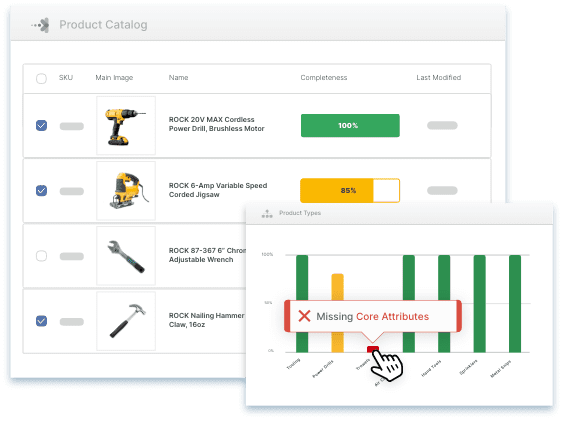
Final thoughts and next steps
Throughout this discussion, we’ve seen that Shopify customization has immense potential to boost your online store’s performance. Some customization strategies highlighted include theme and product customization and optimizing checkout processes. While these customization techniques are critical, one must recognize that maximizing sales on Shopify extends beyond mere store modifications.
Instead, the key lies in harmonizing all elements of your digital selling operations. Customization is just one piece of the puzzle. To truly excel, you must create a cohesive ecosystem where every aspect of your online business works together.
This holistic approach involves:
- Aligning your customization efforts with your overall brand strategy
- Ensuring seamless integration between your Shopify store and other business systems
- Continuously analyzing and optimizing based on customer data and feedback
- Staying agile and adapting to changing market trends and consumer behaviors
Moreover, the importance of choosing robust tools to support your e-commerce activities cannot be overstated. Solutions PIM and DAM software are not just add-ons but essential components that can supercharge your Shopify store’s performance.
These tools enable you to manage your product information and digital assets efficiently, ensuring consistency across all touchpoints and streamlining your operations. By investing in such solutions, you’re not just customizing your store but building a scalable, efficient, and robust e-commerce operation.
Shopify customization refers to tailoring your store to meet specific business needs, branding requirements, and customer preferences. This can involve anything from selecting a suitable theme, adjusting design elements like colors and fonts, and modifying the layout to creating detailed product variants and optimizing the checkout process. Customization is necessary because it allows your store to stand out in a crowded marketplace, provides a more personalized shopping experience for your customers, and can significantly improve conversion rates.
The terms “theme” and “template” are often used interchangeably in the context of Shopify, but there is a subtle distinction. A theme is a complete design package that includes your store’s layout, styles, and functionality. Contrarily, a template is a specific element within a theme, such as a product page or header. In essence, a theme is the entire blueprint of your store, while templates are individual components of that blueprint.
Choosing a suitable theme for your Shopify store involves considering several factors. Start by evaluating your brand’s identity and the message you want to convey to your customers. Your theme should align with your brand’s aesthetics, whether modern, minimalist, or bold. Next, consider your target audience—choose a theme that appeals to their tastes and browsing habits. It’s also essential to think about functionality. Look for a theme that supports your needed features, such as product filters, quick view options, or mobile responsiveness. Lastly, consider the level of customization the theme allows. Opt for a flexible theme, enabling you to make changes to suit your business needs without requiring extensive coding knowledge.
Yes, you can customize your Shopify store without coding. Shopify’s user-friendly interface allows you to make many customizations through the theme editor and app store. However, for more advanced customizations, such as creating custom code snippets or modifying the theme’s core functionality, you may need to learn basic coding skills or hire a developer.
While Shopify customization can significantly enhance your store, there are indeed risks associated with extensive customization. One example is the potential for decreased site performance. Overly complex customizations or poorly optimized code can slow down your store, leading to a poor user experience and potentially lower search engine rankings. Another risk is the possibility of conflicts between different customizations or third-party apps, which can cause functionality issues. There’s also the risk of creating a user interface that’s too complicated or unfamiliar, potentially confusing customers and hindering rather than helping conversions.
To mitigate these risks, start by thoroughly testing any customizations in a development environment before implementing them on your live store. Regularly monitor your store’s performance using tools like Google PageSpeed Insights. When using third-party apps, choose reputable providers and keep the number of apps to a necessary minimum. Always prioritize user experience in your customizations – sometimes, simpler is better. Finally, update your Shopify theme and apps to ensure compatibility and security.

